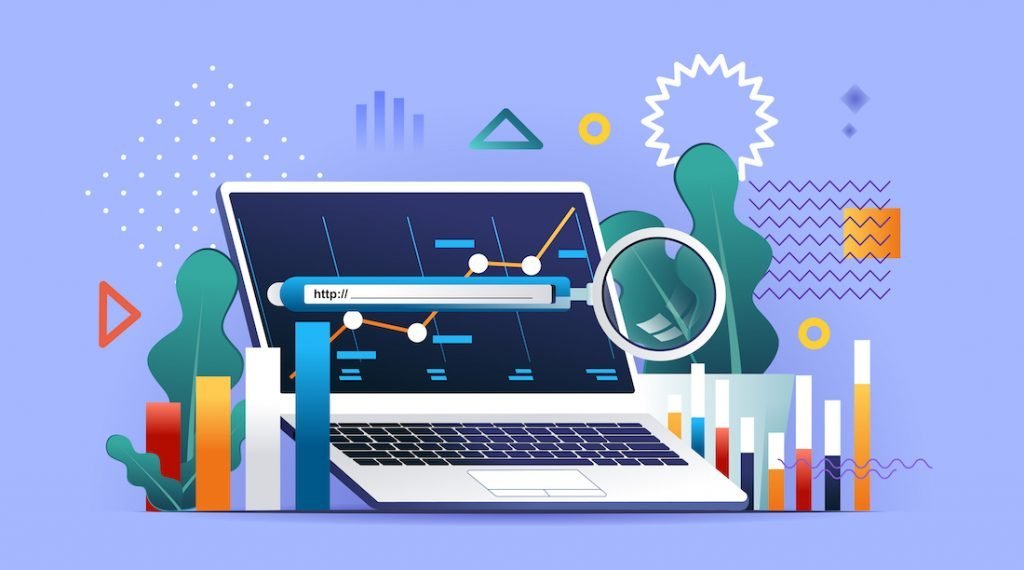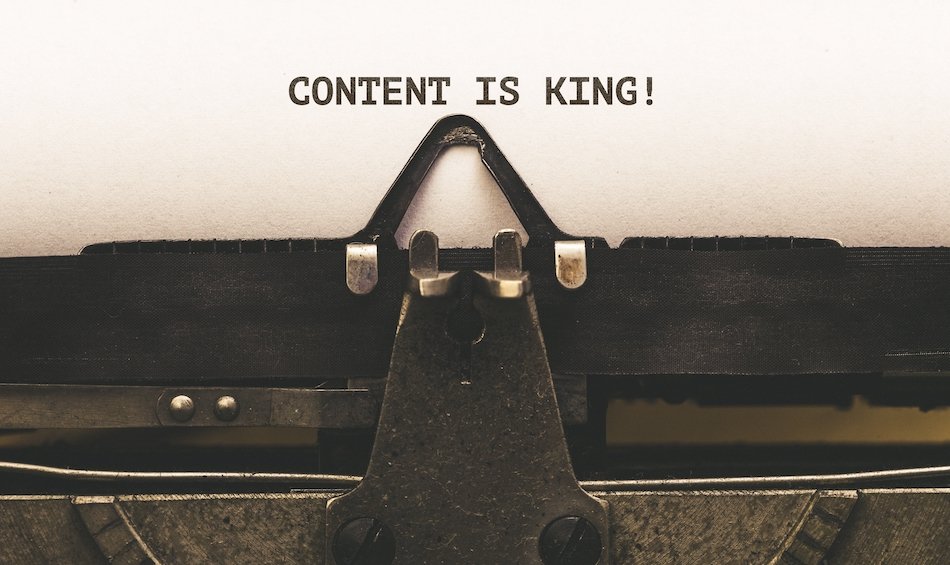Optimizing your website for both search engines and users is the goal here. The most important on-page SEO components are title tags, URLs, and content. On the other hand, off-page SEO only considers signals from outside your website. Bounce rates, demographics, page views, and other such indicators will be used by your SEO professional.
To determine whether a website’s content is relevant to a given search, search engines like Google, DuckDuckGo, Bing, etc., run through your website’s content. A step in this process is looking for relevant keywords. On-page SEO, on the other hand, is much more than just stuffing your content with keywords.
Google’s algorithms look for extra relevant data on the page to provide the most relevant search result. More relevant results are likely accessible if your website is about dogs but does not mention specific breeds. On-page SEO relies heavily on relevancy. You won’t rise in the ranks until you’ve mastered it.
What is the difference between on-page and off-page SEO?
From large corporations to local small business needs SEO — on-page and off-page. The On-page SEO is completely in your hands, whereas off-page SEO is out of your hands.
When you ask someone to link to me as an example of off-page SEO, that’s an example of off-page SEO. On the other hand, your in-house SEO staff is all you need for on-page optimization. Content and keywords are the foundation of both on-page and off-page SEO strategies, regardless of their variances.
To determine which SEO strategy is best for your business, ask yourself whether you have total control over it. On-page SEO encompasses all aspects of your website’s search engine optimization over which you have total command. The rest of the content is located at a separate location outside of this page. Off-page SEO assists your on-page efforts. Thus they go hand in hand.
What comprises on-page SEO?
On-page SEO is required if you want search engines to be able to read your website. As a result, your content will be shown to people when it is found to be relevant to a search. When it comes to SEO, the most crucial thing you can do is learn how to help search engines properly comprehend your website content.
Content
Keywords that appear in the first half of the page or the headers (H1, H2, etc.) are taken into account by Google. For instance, assume you have just completed publishing articles about best. Using the term “WordPress” halfway down the page in a piece. Its tools would be a waste of time.
This is why you should include your keyword in the first hundred words or so of your article. It is one of the most important aspects of your page that Google uses to determine its purpose and establish relevance.
How on-site content optimization works?
There’s a lot of work involved in making your website content search engine friendly. The usage of keywords should be based on the searcher’s purpose. It’s time to learn how to optimize your content for search engines.
Satisfy search intent
Search intent, or user intent, refers to the purpose of a user when they type a query into a search engine. Int intent refers to the absence of a clear end goal during an investigation.
SEO benefits from everything that enhances the user’s search experience. You’ll have a better shot at ranking if you focus on meeting the needs of your readers by answering their questions accurately. Search engines exist primarily to react to the inquiries of their customers.
Rather than just making information accessible, Google or any other search engine attempts to provide its users with relevant and high-quality information. Therefore, any SEO professional’s primary focus should be on determining what people are searching for. For your web pages to rank on Google, your content must provide the most relevant and pleasing answers to users’ search queries.
Uniqueness
It’s not only about avoiding copied material when it comes to originality here. To keep your material fresh, you must avoid rehashing anything previously written. Ensure content freshness in the following ways —
- Leveraging new methods and suggestions
- Creating a library of trustworthy sources
- Adopting a new approach to content
- Incorporate good design and user experience (UX) into your website that blends with written words
Add Value
The greatest method to develop valuable content is to start with a unique draught. But this is just the beginning. As a result, ranking at the top of search results will need something unique. Social media shares and conversations are great for noticing your content (in the comment section).
Here are some of the quick tips to make your SEO content valuable
Add more details: It’s easier for someone to put your information into action if you provide images, pictures, and detailed directions.
Relevant Content: New approaches, procedures, and examples may significantly impact.
Crisp, precise information: Create an interesting post to increase the number of people who see it. The best way to do this is to write concise, well-structured phrases.
Writers with expertise: Most pieces are created by persons who have never really done what they are advising you to do. But, when you can have experts develop content, it will have the breadth and depth that users generally look for.
Title Tags
Title tags are essential for SEO since they help visitors and search engines understand what the page is about. One of the most crucial on-page SEO factors they help search engines understand what the page is about.
When a search engine presents the results of a query, the title tag is the first thing a user sees. As a result, making a strong first impression is essential. Title tag optimization is required to compete with the other sites on the search engine results page (SERP). In addition to providing context, your title tags may help develop your brand or gain an edge in the SERP via familiarity with your brand.
Front-load keyword in the title tag
Your title tag is the most important on-page SEO element since it gives a high-level summary of your website’s content. Keep in mind that the closer your keyword is to the beginning of the title, the more weight search engines will give it.
Your keyword is not required to be at the beginning of your title. This is not always a feasible option. However, it should be properly placed below the title tag inside the first couple of phrases
Use modifiers
Ranking for long-tail versions of your target keyword may be helped by modifiers like best, guide, checklist, fast and secret.
Meta description
Meta description tags have a significant impact on search engine rankings. It serves a purpose as a natural ad text.
Search engines such as Google will display your meta description as a page summary when your ad ranks for a certain phrase. Consequently, your ad’s meta description is just as critical.
Your organic results results’ click-through rate may be boosted by a well-written meta description (CTR). If your page appears in the search results, more visitors will click through and visit your site. Your traffic will improve even if your rating does not change.
- Include any unique selling propositions (USPs) that weren’t already included in the title tag.
- Make it no more than 155 characters in length (with spaces).
- This way, you’ll better understand what individuals are trying to find.
- Specify keywords in the subject line: It contains words and phrases closely related to the Google search term highlighted in bold.
Headlines
A compelling title may be the difference between a click and an impression, even if it seems easy to develop one for a blog article. Because of this, you must write concise and informative headlines without going over the allotted characters. Sites like a share-through and co-schedule allow you to double-check your chosen headline.
When writing headlines for search engine results, you should attempt to pique the curiosity of your readers and get them to click and read.
To improve headlines, here are some basic recommendations.
Use emotional and powerful words
Those with more emotion often beat neutral headlines. Create a strong impression with content that can compel readers to act. As a result, they’ll be more likely to click on the link and read further.
Love, hope, affirmation, rage, fear, contempt, etc. may all be targeted by the best emotional headlines. However, you should exercise caution when using emotional titles to avoid falling into the clickbait trap and increasing your site’s bounce rate.
Use numbers
The power of numbers is undeniable. Numbers in your title may draw in readers and cause them to stop amid an ocean of material. Most of the time, we remember numbers because they help us organize our memories. Using lists and figures might help you outrank your competition on the search engine results page (SERP).
Show benefits
‘What do I get out of this?’ is the first thing a reader asks before clicking on anything. The benefit a reader will get from reading your headline should be made clear in the headline itself.
After reading your piece, the reader has already created expectations based on the value you promised in your title. Make it clear to your reader why they should care, but be careful not to overpromise.
Image optimization
Optimizing images for the web in terms of their format, size, and resolution is a practice known as image optimization. Additionally, it aids search engine crawlers in accurately identifying images, allowing them to better understand the context of their page. Improved SEO traffic may be facilitated by optimizing images.
Image names
IMG 12344. jpg is not ideal for a dog image you put as dog.jpg contains filename based on what it is. Unfortunately, the labels given to photographs and photos by most cameras and cell phones are generic so ensure image names are relevant, specific, and detailed
Compress image size
Image compression reduces file sizes, resulting in quicker loading times. This is a critical ranking factor for desktop and mobile users since it measures how quickly a website loads. Compressing photographs may be accomplished using a variety of software tools. However, ShortPixel is the better option. A web interface is included that enables you to compress up to 50 photographs at once for free. WordPress has a plugin that compresses photos as you upload them.
Add alt text
Images are described using the HTML element alt text (alternative text) on img> tags. Web pages may benefit from alt text by making them easier to read for those using screen readers. Audio from website material, including pictures, is converted using this. If an image cannot be loaded properly, browsers will show alternative text in its place, which might affect your SERPs in the long run.
Wrapping up
These suggestions can help you outrank your competitors’ web pages in search engine optimization. Remember that the most critical consideration is whether or not the results meet the searcher’s expectations.
The ‘technical’ parts are important but only the beginning. The higher your SEO rankings, the more effort you put in and the more of the aforementioned aspects you follow.
In summary, on-page SEO tactics boil down to leveraging searchers with useful information and ensuring your website contains content that adds depth and value.
At Frendeal.ca, we ensure a better user experience while proving your worth to search engines with top SEO services in Calgary. We start by assessing your present site condition and identify its flaws and potential areas of improvement with content to get started.





